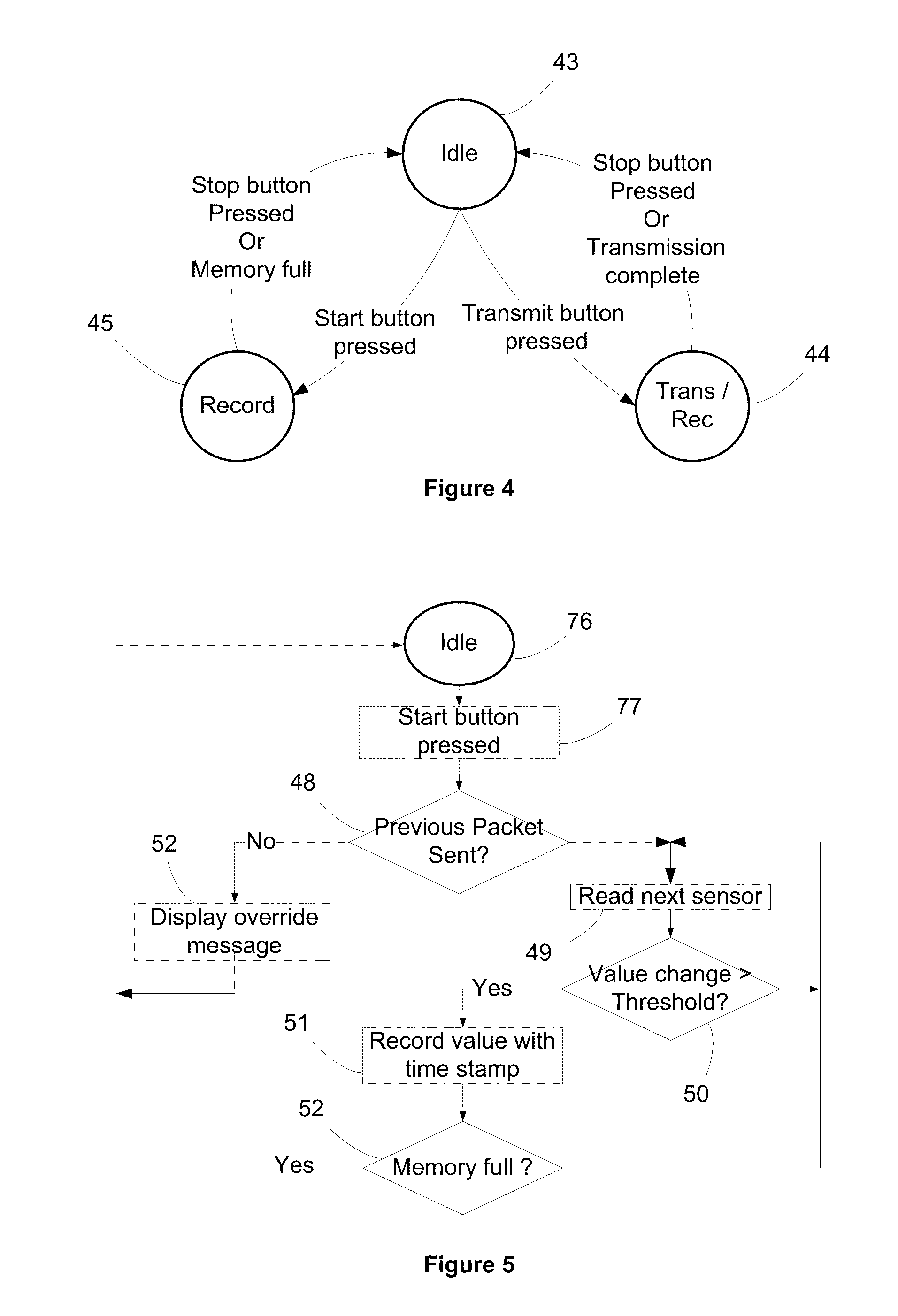Method and apparatus for comprehensive energy measurement and analysis of a building
a comprehensive energy measurement and analysis technology, applied in the direction of electric power measurement, mechanical power/torque control, electric devices, etc., can solve the problems of inefficient equipment, inability to fully benefit the occupant of the building, and insufficient consideration of inefficient equipment in the prior art, so as to reduce consumption without affecting the lifestyle or the comfort of the occupant, and reduce heat loss. , the effect of reducing the cos
- Summary
- Abstract
- Description
- Claims
- Application Information
AI Technical Summary
Benefits of technology
Problems solved by technology
Method used
Image
Examples
Embodiment Construction
)
[0051]Referring to FIG. 1, there is shown a schematic diagram of a preferred embodiment of the disclosed system 100. The system 100 has a logging unit 1 connected to temperature sensors 6, 7, 8 and current sensors 11. The logging unit 1 collects, stores, and transmits the readings of the sensors 6, 7, 8, and 11. In FIG. 1, the logging unit 1 is an electronic apparatus that connects to temperature sensor 6 over wire 2 to measure the temperature outside building 9. The logging unit 1 connects to temperature sensor 7 over wire 3 to measure the inside temperature. The logging unit 1 connects to temperature sensor 8 over wireless radio to measure the temperature inside building 9. The logging unit 1 connects to current sensors 11 over wire 4 to measure, in non-invasive mode, the electric current running in each wire feed 12 of the main power supply line 10 the building structure 9. The wire feed 12 is also connected to the electric power line 13 of an electricity provider. Generally, ea...
PUM
| Property | Measurement | Unit |
|---|---|---|
| comprehensive energy | aaaaa | aaaaa |
| thermal characteristic | aaaaa | aaaaa |
| energy usage | aaaaa | aaaaa |
Abstract
Description
Claims
Application Information
 Login to View More
Login to View More - R&D
- Intellectual Property
- Life Sciences
- Materials
- Tech Scout
- Unparalleled Data Quality
- Higher Quality Content
- 60% Fewer Hallucinations
Browse by: Latest US Patents, China's latest patents, Technical Efficacy Thesaurus, Application Domain, Technology Topic, Popular Technical Reports.
© 2025 PatSnap. All rights reserved.Legal|Privacy policy|Modern Slavery Act Transparency Statement|Sitemap|About US| Contact US: help@patsnap.com



